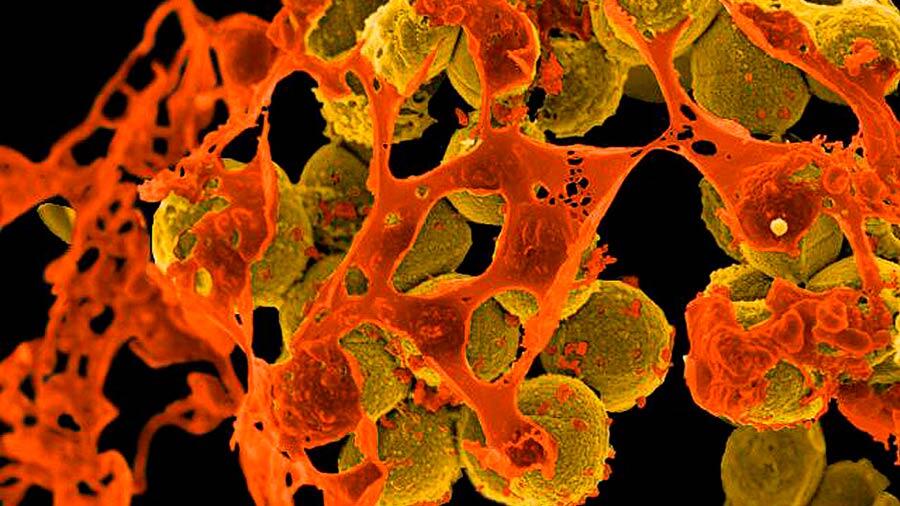The superbug ‘methicillin-resistant Staphylococcus aureus’ (MRSA) use decoys to evade an antibiotic of last resort, according to new research. The findings, by scientists at Imperial College London, UK, suggest possible new ways to attack bacteria, such as interfering with lures.
MRSA is responsible for thousands of deaths worldwide every year and as bacteria are resistant to many different antibiotics, treatment options are limited and often ineffective. One of the few antibiotics that can be used against MRSA is a drug of last resort known as daptomycin, but nearly a third of MRSA infections are not cured with this medicine, leaving patients with a poor prognosis.
However, until now scientists did not know how MRSA could survive daptomycin. In recent findings, published in the journal Nature Microbiology ‘, a team from Imperial found that molecules emit SARM lure that allow you to escape being killed by the antibiotic.
The lures are made from the same type of fat that forms the outer layer of cells of MRSA. The antibiotic generally engages the fat layer prior to drilling a hole in the outer layer and kill the bacteria. However, when these decoy molecules SARM fat free, antibiotic closes latch in place and off.
The lead author, Andrew Edwards, Department of Medicine at Imperial, said:. “These fat molecules act in a manner similar to the flares lure throwing fighter aircraft to avoid a missile way the antibiotic is mistakenly directed to lures, which allows bacteria to evade destruction. this is the first time that this system is in SARM decoy “.
By using bacterial cells in laboratory experiments and mouse, scientists discovered that only some bacteria MRSA can use this system as a decoy. The team believes this is the reason that about 30 percent of infections are not cured with antibiotic daptomycin administration.
Disconnection of a communication system, relevant
In these resistant infections, MRSA bacteria off a communication system you normally use to “talk” to each other. This communication system allows bacteria release toxins that damage human cells, but also seems to interfere with the production of the lure.
Edwards, who is based at the Center for Molecular and infection Bacteriology Medical Research Council in Imperial, details. “These bacteria MRSA ‘is obscure’ and stop all communications is the disconnection of this communication system enabling lures to function effectively. ” He adds: “Our attention is now focused on understanding more about how these lures are formed and how they can be blocked completely to help daptomycin work better in patients.”
“Our findings suggest that the importance of this decoy system can be underappreciated and probably exists in many other bacteria,” says Dr. Edwards, noting that a similar mechanism of lure has been in the bacterium E. coli ‘.
Further experiments revealed that one can avoid the release of lures partially using a second antibiotic similar to penicillin, oxacillin call. Although MRSA is resistant to oxacillin, use with daptomycin may allow the latter antibiotic the bacteria kill more effectively.
Previous research has suggested that antibiotics such as penicillin daptomycin help kill MRSA, although scientists did not know why. Currently, there is an ongoing clinical trial with two antibiotics, led by an Australian team.
Furthermore, tests revealed that the next generation of antibiotics, currently in clinical trials, seems to stop production of fatty lures. “This suggests that this new antibiotic can also help daptomycin kill MRSA, which could provide another treatment option for patients,” says Edwards, whose work was supported by the Medical Research Council, Biotechnology and Biological Sciences (BBSRC, for its acronym in English) and the Wellcome Trust.











